'Everdale' review to create your own city with animals and buildings using wood, sap, pebbles and fruits

Under the towering branches of a large tree, the complete Japanese version of 'Everdale ' will take a year to create a wonderful city in the Everdale Valley where the civilization of forest animals blooms, from Arclight Games on January 9, 2020 Appeared on the day. In 'Easy-to-enjoy
Everdale Full Japanese Version | ArclightGames Official
https://arclightgames.jp/product/%E3%82%A8%E3%83%90%E3%83%BC%E3%83%87%E3%83%BC%E3%83%AB/
◆ Opened
The package depicts a forest and animals surrounded by faint light.

The number of players is 1 to 4, and the target age is 13 years old and over. Play time was expected to be 40-80 minutes.

The contents are a rule manual and 'How to assemble an eternal tree'

Game board and eternal tree parts and tokens

When the game board is expanded, it looks like this.

Eternal tree parts and tokens can be easily removed from the cardboard.

8-sided dice and twig tokens, fruit tokens, sap tokens, pebble tokens

There are 4 types of worker pieces. There were 6 of each color.

Special event card and forest card

And 65 building cards and 63 animal cards. Building cards and animal cards have the same pattern on the back.

◆ Preparation
Start by assembling the eternal tree. After assembling the trunk ...

Set the leaf part that will be the second stage.

Insert the third leaf from the top. As described in 'How to assemble an eternal tree', note that the third stage cannot be set properly unless it is inserted diagonally.

The eternal tree is completed.

Place the eternal tree on the stump drawn in the upper center of the game board.

And on the banks of the river that flows in front of the stump, twig tokens and sap tokens ...

Place pebbles tokens and fruit tokens.

Then place the victory point token and the door token beside the game board.
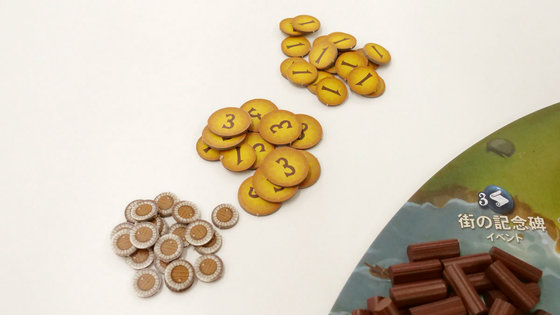
Shrub the forest cards and wake up one by one in the bush holes on the left and right edges of the game board. The number of cards to be placed is 3 for 1 to 2 players and 4 for 3 to 4 players. I will not use the remaining forest card, so I will return it to the box.
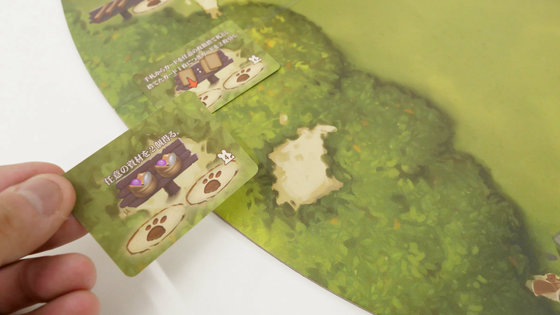
Then place the basic event card at the base of the eternal tree as shown in the image below.
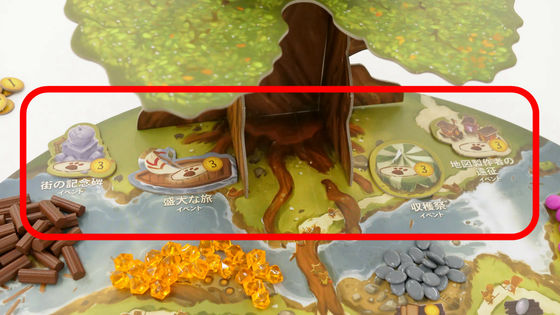
After shuffling the special event cards, place 4 cards in the second row of the eternal tree as shown in the image below, and return the remaining special event cards to the box.

Shuffle animal cards and building cards to create a pile of cards, and arrange them so that they fit in the space at the base of the eternal tree.

Draw 8 cards from the top of the pile of cards and place them face up in the 'square' in front of the game board.
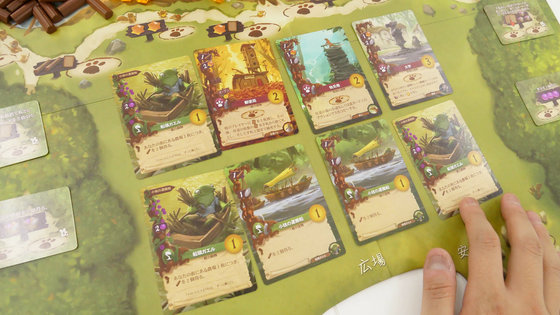
Then, deal 2 worker pieces to the player, and then deal 5, 6, 7, and 8 cards in order from the start player.
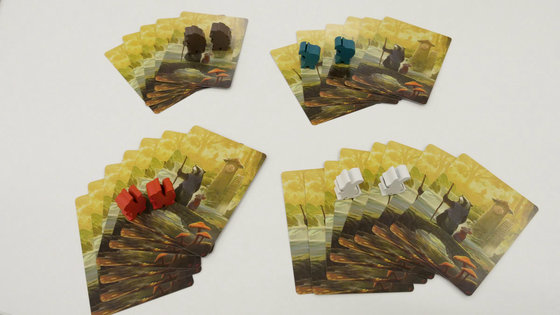
Place the remaining worker pieces on the third tier of the Eternal Tree.
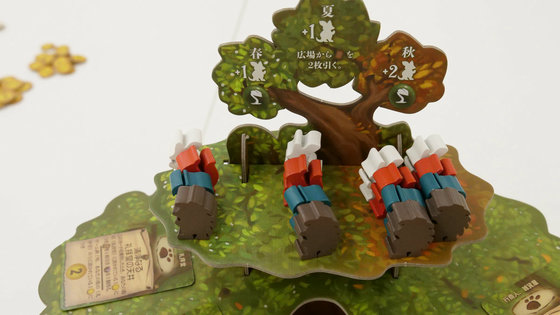
When the preparation is completed, it looks like this. It took about 5 to 10 minutes to get it out of the box.
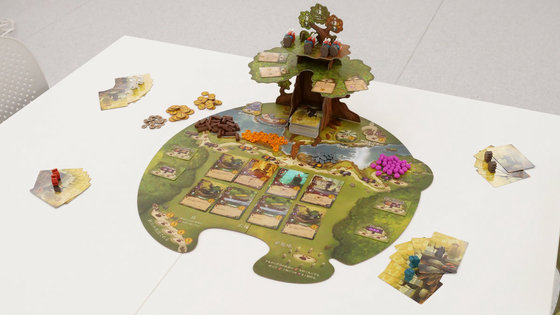
◆ I tried playing 4 players
'Everdale' is set in the towering big tree, the stream flowing under it, and the Everdale Valley where many animals live, and by arranging the given cards, you can build a building or create a motivated animal. A game that aims to build a splendid city while welcoming you. Players start construction in winter and compete in spring, summer, autumn and seasons to see how complete the city can be in the next winter.

The progress of the game is simple, and the player advances his turn clockwise. Players can perform three things in their turn: ' play cards ', 'place worker pieces ', and ' prepare for the next season '.
'Play Card' is an action that puts one of the eight building / animal cards in your hand or square into your hand. However, to play a building / animal card, you will have to pay the cost depicted on the card. For example, 'Sap Refinery' can be played with one sap token and one pebble token.
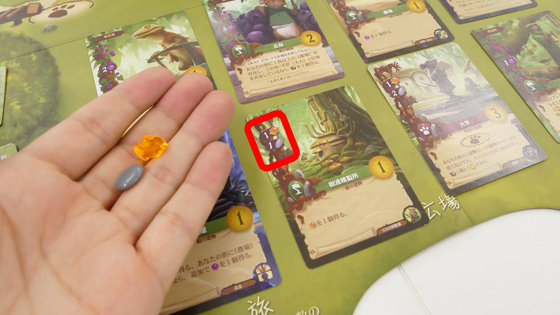
After activating the effect, the building / animal cards you played will be lined up in front of you. The Sap Refinery is a building card that allows you to get one sap token.

Besides building cards, there are animal cards. The cost of an animal card will require a corresponding building card or material.
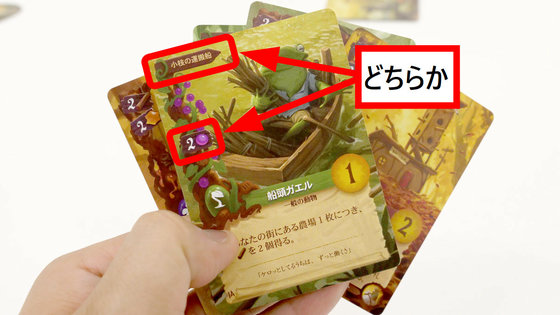
For example, a boatman frog card can be played without paying materials if you have a building card called 'Twig Carrier'. However, if you play on the condition of a building card, you need to place a door token at the bottom right of the building card.
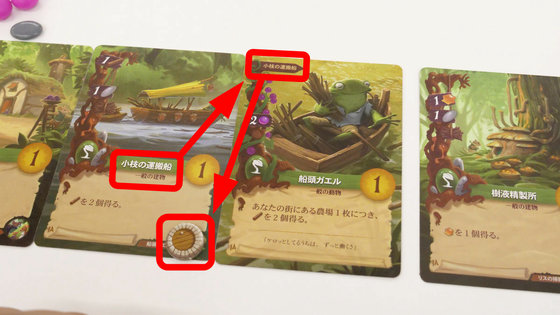
In addition, there are two types of building cards and animal cards: 'general buildings / animals' and 'special buildings / animals'. You can install any number of general building / animal cards in the city. Only one special building / animal card can be placed in a city, but it has a pretty powerful effect.
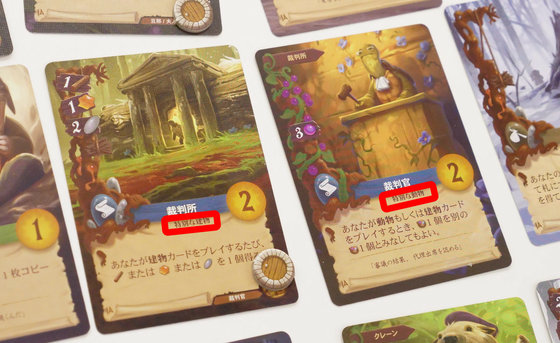
For example, the card 'Prison' is a powerful card that reduces the cost of any material by 3 from another card by imprisoning a building or animal card that is already placed in the city.
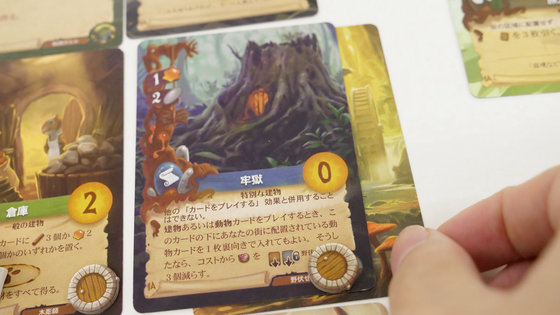
By reducing the cost of the card, you can get at least 4 victory points with one card, but it is also easier to get a 'King' card that requires 6 fruit tokens.
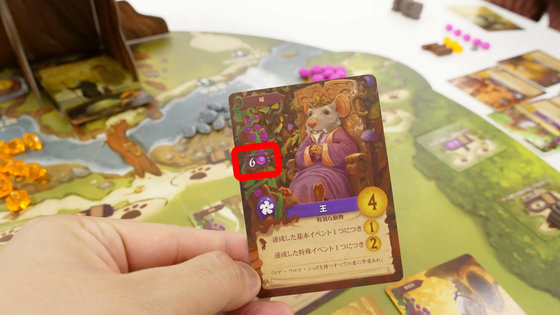
By arranging the buildings / animal cards you played in front of you, you can create your own city.

You can arrange up to 15 building / animal cards you have played, and the rule manual says, 'We recommend arranging 5 cards in 3 horizontal rows,' as shown in the image below. The order of arrangement is arbitrary, so 'I want to arrange the farms side by side and make them vast.' 'The eternal tree is a symbol of our city, so I will put it in the center.' 'There are shopkeepers and judges, but there is no important building. The fun of playing will increase if you arrange them to reflect your taste, such as 'Human resources are the property'.
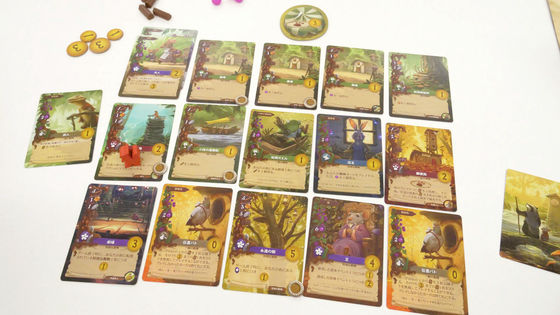
Materials are required to place buildings / animal cards and create a city. You can get each material by 'Arrangement of worker pieces'.
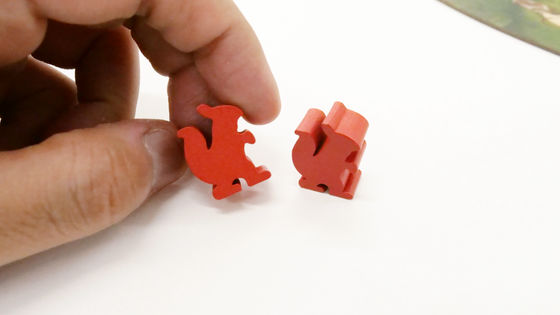
Only one worker piece can be placed on a square with footprints per turn. For example, if you place a worker piece in the square in the image below ...

You can get 2 sap tokens. Since it is not possible to build a city without materials, it is important to place workers on the game board at what timing and in which square in order to collect materials efficiently.

In addition to the game board, the squares where worker pieces can be placed are forest cards and ...
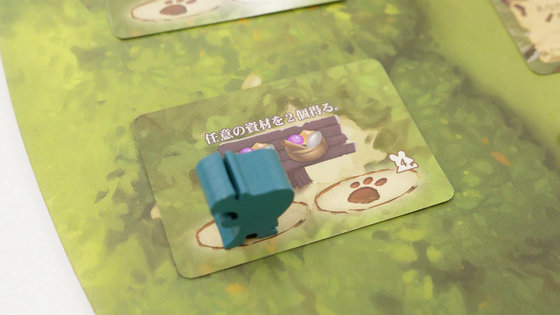
It may also be drawn on the building card placed by the player.
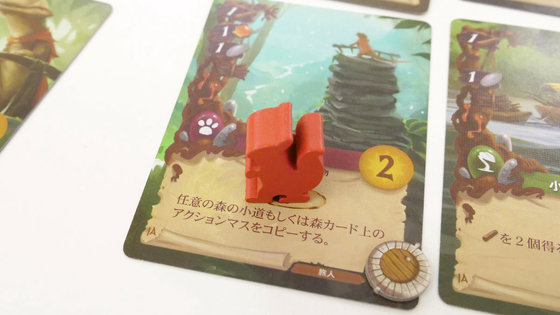
The basic event card can be obtained by the player who first placed the worker piece in the square. However, it cannot be placed unless the conditions presented are met. For example, the following 'Harvest Festival' event can only be obtained by placing 4 animal / building cards with the attribute 'Green Production Card' in the city.
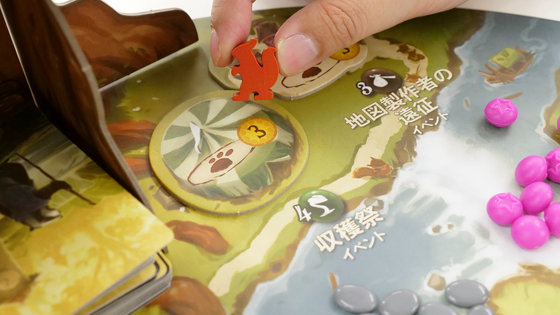
Special event cards are cards that give you various effects and victory points. You can also get this by arranging worker pieces, but ...
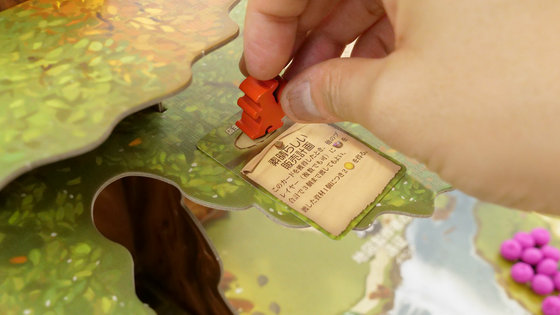
Special event cards cannot be obtained unless the card written at the top is placed in the city. For example, a 'great sales plan' that can convert materials into victory points can only be obtained by placing the 'Storekeeper' and 'Post Office' cards in the city.
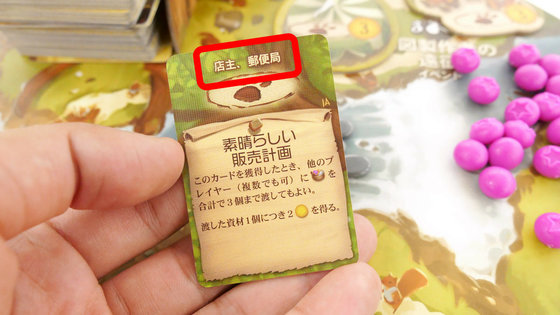
There is also a 'travel' mass where you can place worker pieces only in the last season, autumn. This piece says, 'You can get victory points for the number of discarded hands.'
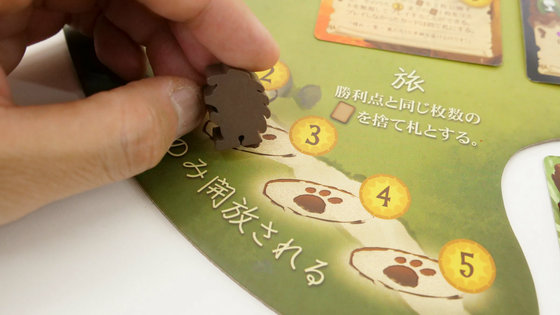
And when you've used up all the worker pieces, you can 'prepare for the next season.' Worker pieces will not come back when placed, but will come back when the season is over. In addition, the pieces placed in the third row of the eternal tree will be added to your hand. In other words, the number of worker pieces that can be used increases steadily as the season progresses.
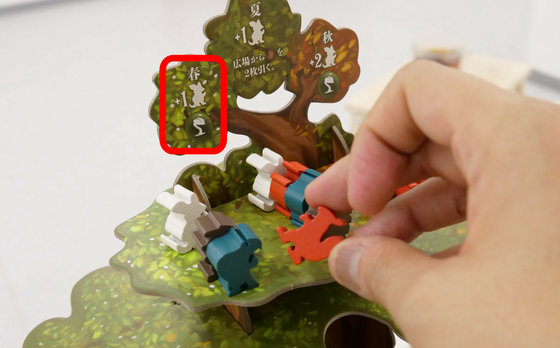
Also, preparing for the next season will have additional effects depending on the season. For example, when preparing for spring and autumn, the effect of the 'green production card' will be reactivated. In the following cases, you will get 1 fruit token at 'Farm', 2 twig tokens at 'Twig Carrier', and 4 twig tokens at 'Shipman Frog'. Thinking about the timing and combo of playing cards is the heart of this game.
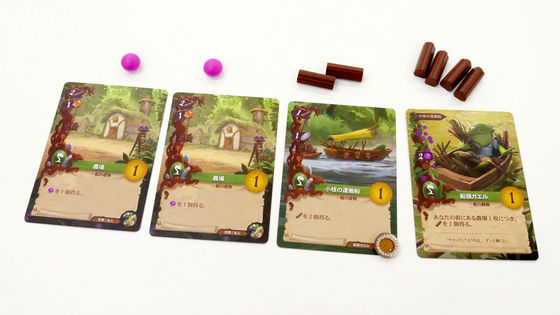
'Preparing for the next season' can be done at any time by the player if the conditions are met. In other words, there could be a situation where 'I'm about to finish autumn and the next winter is coming, but my opponent is still playing summer.' Players who place more and more worker pieces, the seasons pass, and they have nothing to do will pass the game.
The game ends when all players pass the game. Convert all the victory points of each player. The player's victory points are basically the total value of the numbers drawn on the building / animal card, and the additional points due to the effect of the building / animal card and the victory points of the basic event card and special event card are totaled. .. The surplus materials are not converted into points, so the point is how cleanly they can be used up.
Below is the city of the player with the highest victory points.
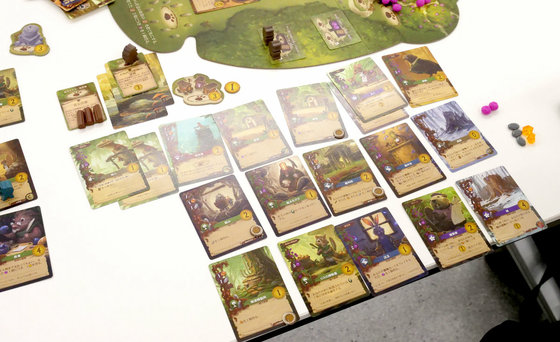
It is characteristic that you are firmly getting special event cards and basic event cards that will earn you a lot of victory points.

And the image below is the city of the player who lost by one point and was unfortunately in second place.

Although this player didn't get any basic event cards or special event cards, he is an 'architect' card that can convert sap tokens and pebble tokens into victory points. We have created a wonderful city that is close to the top.
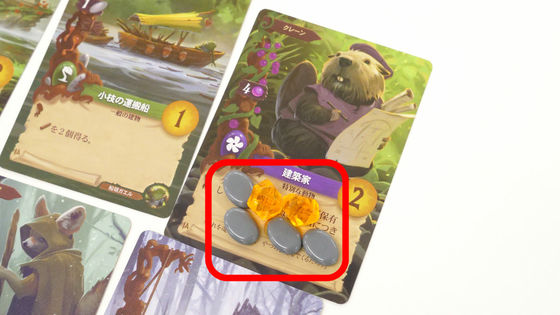
In addition, when playing with four people, one game took about 3 hours, which was more than double the expected play time. The second play still took more than 2 hours and 30 minutes, even though everyone knew the rules.
◆ I played with solo play
Solo play is to win against Ragwart, a mouse who hates the Everdale Valley, for three years in a row (three games). Ragwart claims to be the King of the Everdale Valley, gathering thugs and trying to rule the Everdale Valley with his tricks and dirty tricks.
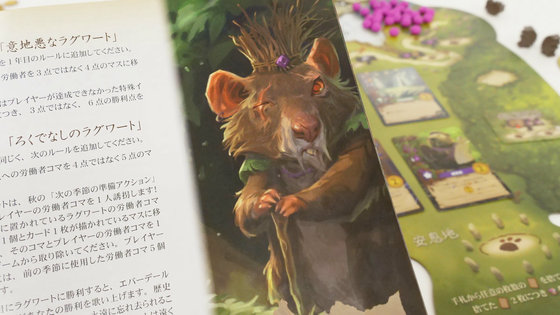
The basic way to proceed with the game is the same. However, Ragwart does not have a hand, only dice.
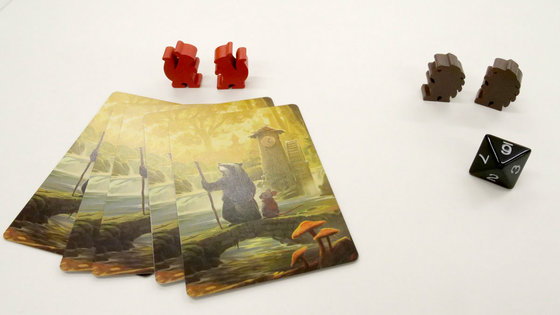
And the worker pieces of Ragwart interfere with the player.
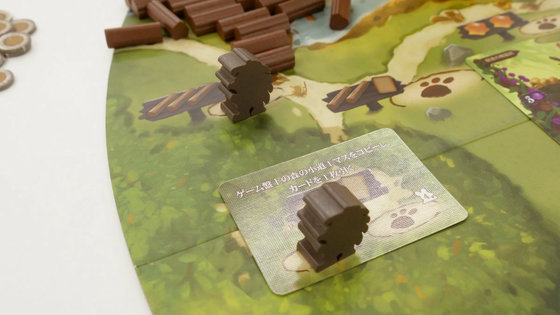
The player's turn is the same as when playing with 2 to 4 people. However, when the player plays a building / animal card ...
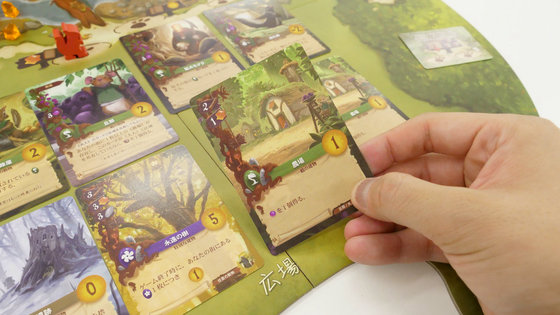
Ragwart plays one of the building / animal cards in the square, which is determined by the roll of the 8-sided die, at no cost.
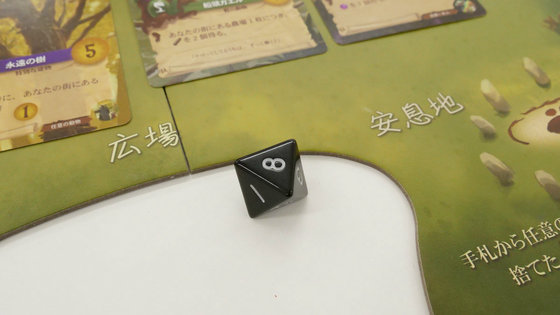
The dice roll corresponds to the location of the building / animal card placed in the square. For example, if you roll an 8, Ragwart will play the bottom right card.
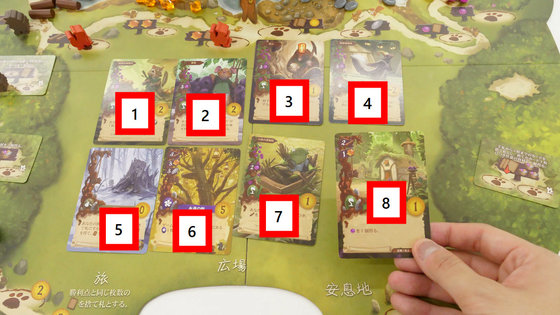
Even if you play, Ragwart doesn't create a city like a player, it just stacks cards. However, it is necessary to classify and stack according to the attributes of the cards in consideration of the score calculation later.
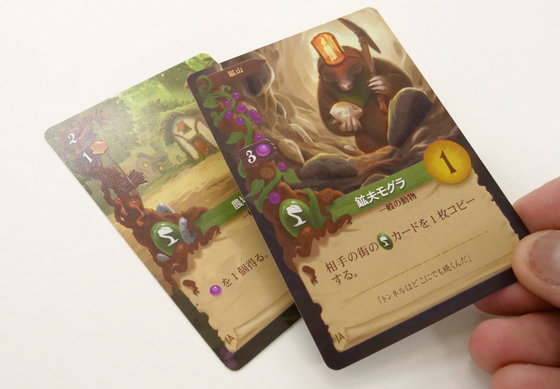
And when the player prepares for the next season, Ragwart also prepares for the next season. For example, when the first winter is over and spring is coming, the additional Ragwart worker pieces on the Eternal Tree are ...
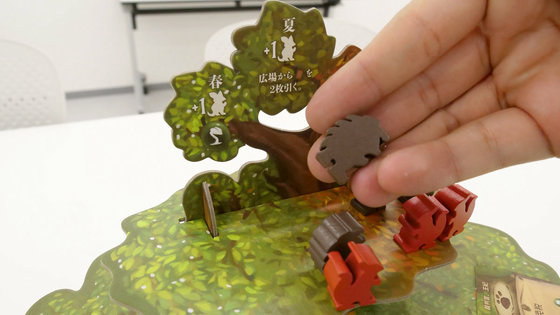
Place it on the building / animal card at the top left of the square. The card where the Ragwart worker piece is placed will not be playable by the player.
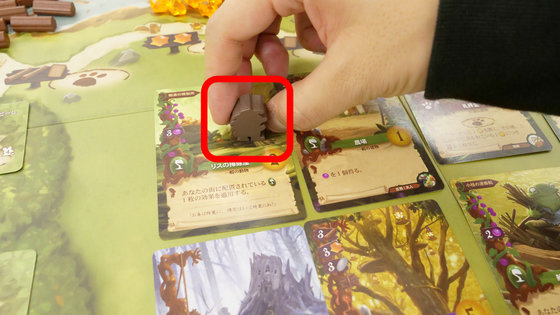
As the season progresses, Ragwart worker pieces will be placed in the square, so the number of buildings / animal cards in the square that players can play will decrease.

Also, as the seasons change, Ragwart's worker pieces move through the squares as follows.

In addition, if the card acquired by Ragwart meets the conditions of the basic event card, Ragwart will carry the basic event card without any questions.
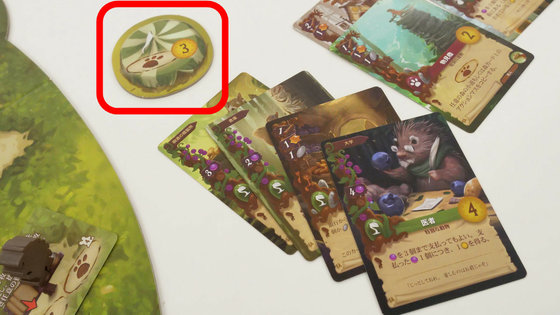
Since it is a one-player game, the progress of the game itself goes smoothly.
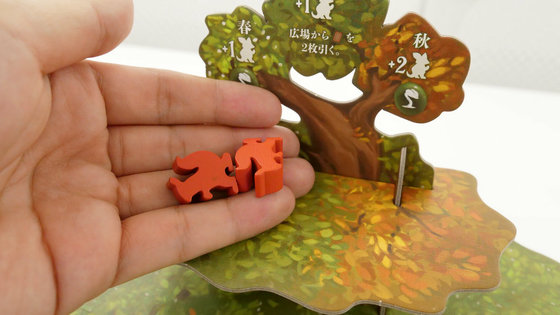
When the player finishes the game, the player and Ragwart will calculate the victory points. The calculation of the player's victory points is the same as for 2 to 4 players.
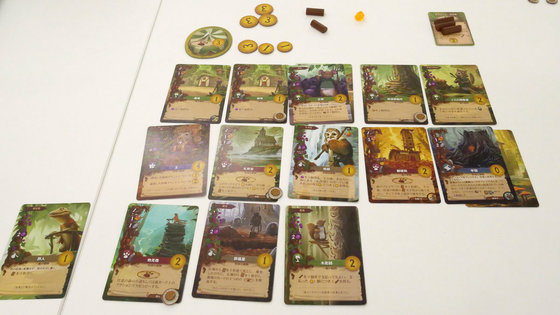
Ragwart has 1 and 2 non-blessing building / animal cards, 1 and 3 purple blessing cards, 1 and 3 basic event cards that have been achieved, and 1 and 3 special event cards that the player could not obtain. Calculate victory points by points. In the following cases, the player just won in the first year, but after the second year, the remaining special event cards are converted to 6 points, and the ragwart's victory points are set to increase, so the difficulty level is Rapidly up. I tried solo play four times, but in the end I couldn't get rid of Ragwart for three years in a row.
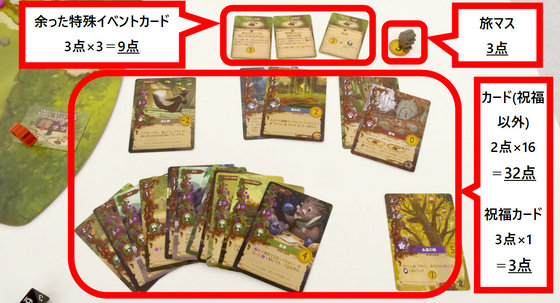
Everdale is attractive because it has a well-crafted world view and gorgeous components, and you can enjoy role-playing such as thinking about your city while arranging the cards you played. At the same time, it was a game that required a high degree of strategy, as it was necessary to carefully consider the position and timing of card combos, worker pieces, and material management.
In addition, the draw of cards including the hand greatly influences the development of the game, so not only strategy but also luck is important. Even if the cards are drawn well, you can't create a good city without thinking about cooperation and combos, and no matter how skillfully you arrange the cards, if you can't get the card you want at the right time, you can always run out of materials. There is also the development that there will be no more, and the balance between strategy and luck required in the game is exquisite.
Everdale is a bit more difficult for those unfamiliar with board games because there are so many places to look at and points to think about when playing, but the game is very satisfying. There was enough volume.
'Everdale Complete Japanese Version' can be purchased at Amazon.co.jp for 8485 yen including tax at the time of article creation.
Amazon | Everdale Full Japanese Version | Board Games | Toys

Related Posts:







